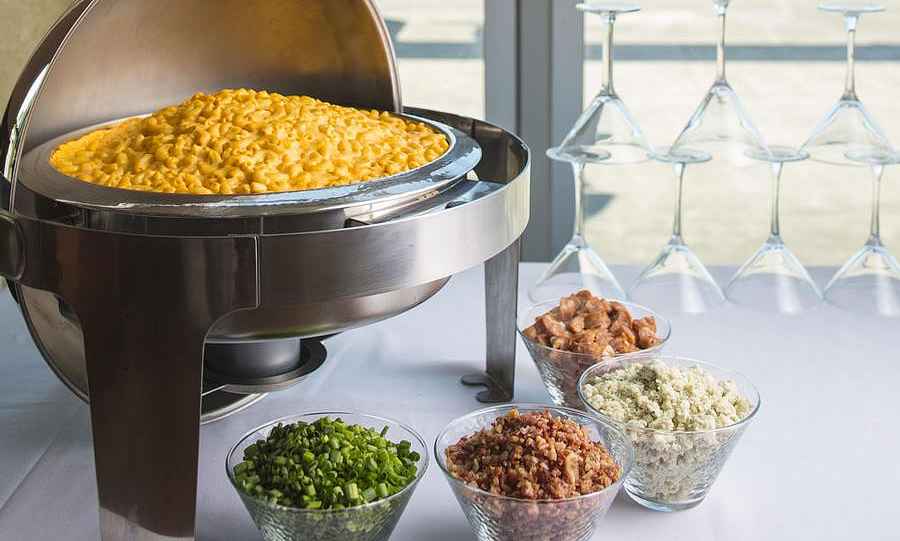






See listing of Recent and Most Popular articles on the Home Page
My World
Category: History / Topics: Food & Nuitrition • History
A Gooey and Delicious History of Mac and Cheese, a Meal Once Fit for a King
by Ian Lecklitner / MEL Magazine
Posted: April 30, 2022
Ever heard of the fabled land of Bengodi, where they roll macaroni noodles down a mountain of Parmesan cheese, straight into your mouth?…
Editor's Note: The following article popped up in Pocket and seemed a fitting companion to Garrison Keillor's article this week on what mac and cheese means to him. Following is an excerpt of the article, with a link to the full article at the bottom of the page.
From the confines of our home throughout the pandemic, many of us watched closely as the coronavirus and the resultant quarantines unfolded, catapulting many into unemployment, hospitalization and beyond. Starved of our familiar comforts — restaurants, gatherings, nature — we grasped, desperately, for any simple indulgence able to transport our minds to another, happier place. For many, that simple indulgence remains mac and cheese, a meal that delivers a sense of warm reassurance, and a sense of relief for anyone who relies on the microwave for sustenance.
Mac and cheese truly is a food for the masses, a meal that knows no bounds. But only somewhat recently did this magical combination of noodles and cheese acquire such widespread renown. In fact, if we travel back a few hundred years, when mac and cheese first appeared in the lengthy annals of humanity, it was a dish reserved strictly for royalty.
So, as an homage to one of the few simple pleasures we have had lately, I present to you the full story of how mac and cheese became, well, mac and cheese.
Come along, and bring a large bowl with you.
Only for the Big Cheese
As Adrian Miller, food historian and author of Soul Food: The Surprising Story of an American Cuisine, One Plate at a Time, explains, “Mac and cheese goes back a lot further than people think. The earliest written recipe for mac and cheese was found in a book called The Forme of Cury, which was published circa 1390. That was the go-to cookbook for the royal court of Richard II and Queen Elizabeth I, so that would have been the cookbook that his and her cooks were using.”
. . .
Unlike the incandescent yellow mac and cheese that many of us are familiar with today, mac and cheese at this time period was a little different, primarily because it was made with parmesan cheese, as opposed to cheddar. “The earliest version of mac and cheese was pretty much just the noodles, parmesan cheese and butter,” Miller says.
. . .
For the next several hundred years, Miller says, “It was high-end food for a long, long time.”
Noodling Across the Ocean
In the 1600s, France saw the invention of bechamel sauces, or creamy cheese sauces that many of our modern-day mac and cheeses are made with. Shortly thereafter, these sauces spread to England, and eventually the U.S. Notably, in the late 1700s, Thomas Jefferson, as the American Minister to the Court of Versailles in France, discovered mac and cheese. “Thomas Jefferson got a mac and cheese jones while he was there,” Miller explains. “He was there in the late 1780s, right before the French revolution. He was the minister of France. He just falls in love with mac and cheese, so much so that when his term ends — basically because of the French revolution — he actually smuggles a macaroni maker back to the U.S.” He then has an enslaved cook, named James Hemings, start cooking mac and cheese for him regularly.
. . .
Miller explains that mac and cheese was high-end at this time for two main reasons. “One is that true macaroni and cheese called for noodles made out of durum wheat, which is a very special kind of wheat that pretty much really only grew in Italy, so it was really expensive,” he says. “The other thing is that parmesan cheese at that time was very expensive, and the Italians had that on lockdown.”
Bring Forth the Cheddar
“A shift starts to happen in the 1800s, where we start to see people trying to grow durum wheat in other parts of the world, and they’re trying to find a substitute for parmesan cheese,” Miller explains. “What puts mac and cheese on the road to what we understand it as today is that, in the late 1700s and early 1800s, British dairy farmers started making cheddar cheese, and the older cheddars were very similar to parmesan — they were very hard and flaky, so that became the substitute for parmesan.”
, , ,
“Right around the same time, farmers here get really good at growing durum wheat, so the price of mac and cheese just plummets,” Miller continues. “It keeps dropping so that, by the time you get to the 1900s, mac and cheese is now considered a dish for the masses.”
Krafting a Cheaper Way
“The next milestone is 1937, when Kraft develops the Macaroni & Cheese Dinner,” Miller explains. “Again, it’s something to stretch family meals during the Great Depression. So, mac and cheese isn’t only a cheap family meal — you have the blue box — but it’s also poverty food. During the Great Depression, when relief societies were formed, often they were doling out macaroni and cheese for people to make.”
As Lynne Galia of the Kraft Heinz company explains, World War II also helped push mac and cheese as a poverty meal. “World War II forced Americans to economize, and many items were rationed to aid the war effort,” she says. “Careful shoppers purchased 50 million boxes of Kraft Macaroni & Cheese dinner, because they could get two boxes with one food ration stamp.”
, , ,
In other words, during the mid-20th century is when we really start to see mac and cheese in both its celebratory, high-end form and as a quick, weekday meal that can be served straight out of the box.
A Versatile Masterpiece
“As of late, with the boom in comfort food, mac and cheese is now starting to head back to its high-end roots,” Miller says. “It really started in the 1990s, when we started to see mac and cheese show up in various forms — now people even add lobster to it.”
But the fact that mac and cheese has the capacity to be both a Great Depression meal and a dish fit for a king is exactly what makes it so great. “First of all, it’s just good,” Miller emphasizes (which, true). “But second, it’s versatile. It’s the perfect playground for cooks.”
In fact, no matter what kind of cook you are, a master chef or someone who relies on the microwave, surely you can make some kind of mac and cheese, and chances are, it will taste good. And while a hefty bowl of noodles and cheese may not be the solution to all of our problems right now, if it can make us feel a little better for even a moment, hey, that’s all we can really ask for.
Ian Lecklitner is a staff writer at MEL Magazine. He mostly writes about everyone's favorite things: Sex, drugs and food.
Read the full article at MEL Magazine.
Search all articles by Ian Lecklitner
Posted: April 30, 2022 Accessed 505 times
![]() Go to the list of most recent My World Articles
Go to the list of most recent My World Articles
![]() Search My World (You can expand the search to the entire site)
Search My World (You can expand the search to the entire site)
![]() Go to the list of Most Recent and Most Popular Articles across the site (Home Page)
Go to the list of Most Recent and Most Popular Articles across the site (Home Page)
 Loading requested view...
Loading requested view...
